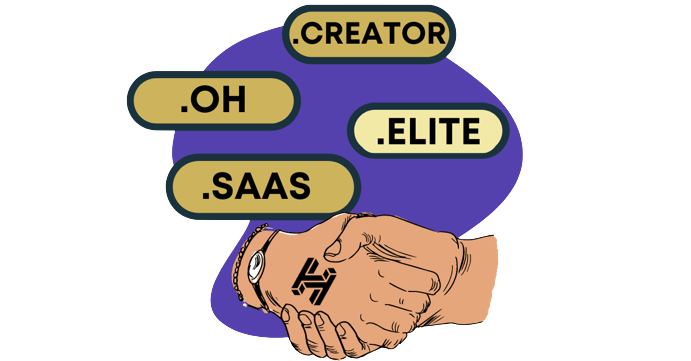
If you’re interested in cryptocurrency and decentralized finance, you may have encountered the term Initial DEX Offering (IDO). But what exactly is an IDO, and how does it differ from other popular crowdfunding models like Initial Coin Offerings (ICO) and Initial Exchange Offerings (IEO)?
In this comprehensive guide for beginners, we’ll break down the key features of an IDO and explore how it works. We’ll also discuss the advantages and disadvantages of using an IDO as a fundraising mechanism for cryptocurrency projects.
Whether you’re an experienced crypto investor or new to the scene, this guide will provide you with the knowledge you need to understand and participate in an IDO. So, let’s dive in!
What Is an Initial DEX Offering (IDO)?
An IDO, or Initial DEX Offering, is a new type of decentralized and permissionless crowdfunding platform that changes how fundraising is done in the crypto space.
So, what does it mean when a project launches an IDO? Essentially, it means that the project is launching a coin or token via a Decentralized Liquidity Exchange. This type of exchange relies on liquidity pools where traders can swap tokens, including crypto coins and stablecoins.
The original concept of IDOs has shifted significantly over the years. However, in its current most popular form, an IDO is a successor to ICOs (Initial Coin Offerings) and IEOs (Initial Exchange Offerings), aiming to raise money and bootstrap a project. Unlike ICOs and IEOs, where tokens are sold prior to listing, with IDOs, they are listed immediately on a Decentralized Exchange (DEX) – hence the name.
The first-ever IDO took place in June 2019 with Raven Protocol using Binance’s Decentralized Exchange. Investors could buy the token until the hard cap was reached, and this is how the first few IDOs took place on most platforms.
You can find a list of upcoming, live, and past fundraising projects on CoinMarketCap’s ICO calendar. The projects are categorized based on the various stages of their fundraising, including IDO, IEO, private sale, public sale, and crowd loan.
How Do Crypto IDOs Work?
IDOs are a way for cryptocurrency projects to raise funds through decentralized exchanges, or DEXs. DEXs can provide immediate token liquidity, which is essential for the success of IDOs.
Projects often allocate a cut of funds to provide DEX liquidity and usually adopt a proof-of-stake consensus mechanism to discourage investors from selling too soon. With IDOs, investors can buy a large bag of tokens at a discounted rate before the public sale goes live, allowing them to sell their tokens at a higher price once the IDO launches.
The process is much quicker than traditional fundraising models, and tokens are listed immediately after the completion of the IDO.
Smart contracts that function as automated market makers enable traders to exchange assets directly from the liquidity pool. The pricing mechanism, known as bonding curves, determines the actual exchange rate based on the ratio of assets in the pool.
It’s important to note that the pricing of the assets in the pool may differ from those on centralized exchanges. While DEXs are considered more trustworthy as they don’t require a human intermediary, they remain vulnerable to technical exploits.
Other Initial Offerings Methods
- ICO – Initial Coin Offering – a cryptocurrency fundraising method where the project team publishes a whitepaper, and potential investors can invest directly on the project owner’s website.
- IEO – Initial Exchange Offering – a fundraising model where the project owner seeks out a cryptocurrency exchange that will list their coins. The exchange takes a listing charge and even a portion of token sales.
- IGO – Initial Gaming Offering – a fundraising model for cryptocurrencies and tokens in the NFT gaming space, where investors must purchase a specific number of cryptocurrencies from the respective launchpad and agree to lock their cryptocurrency for a certain period.
The Most Successful Crypto IDOs Launches
SushiSwap (SUSHI)
One successful example of an IDO project is SushiSwap, which is a decentralized crypto exchange built on Ethereum that is attempting to take the place of Uniswap as the most popular Ethereum-based decentralized exchange. Rather than issuing an ICO, SushiSwap rewarded liquidity providers (LP) on Uniswap by staking their LP tokens on SushiSwap. For this, users were rewarded with SUSHI tokens.
Universal Market Access (UMA)
Another successful IDO launch is the Universal Market Access (UMA) protocol, which enables DeFi developers to build synthetic assets on Ethereum. Its token sale launched on the decentralized exchange Uniswap with a starting price of $0.26 per token. However, the token price quickly ramped up as investors lined up to purchase it, resulting in traders paying higher gas costs. Despite this initial setback, UMA has, at the time of writing, a market capitalization worth over $160 million, with one token costing more than $2.40.
Raven Protocol (RAVEN)
Last but not least, another great launched example of an IDO project is Raven Protocol, which is a decentralized and distributed deep-learning training protocol for deep neural networks. It provides cost-efficient and fast solutions that use blockchain to transform the AI and machine learning industries, which major corporations currently dominate. Contributors receive rewards by sharing their computer resources, while the utility token is used for AI training.
IDOs vs. IEOs vs. ICOs
| Feature | IDO | IEO | ICO |
| Vetting | Projects are vetted by the DEX | Projects are vetted by the CEX | Projects are not vetted |
| Fundraising | Investors’ funds are handled by the DEX | Investors’ funds are handled by the CEX | Investors’ funds are handled by the project |
| Smart contracts | Smart contracts are created and run by the DEX | Smart contracts are created and run by the CEX | Smart contracts are created and run by the project |
| Token listing | Liquidity pools open on the DEX | Token is listed on an exchange | The project has to find an exchange to list on |
| KYC/AML | No | Yes | No |
Advantages and Disadvantages of IDOs
Advantages of IDOs:
- Fair Fundraising: IDOs offer a reasonable fundraising option for startups as they can reach a broader audience, not just private investors. Additionally, investors can purchase tokens at a reduced price during the token sale, which they can later sell to the broader public, making a profit.
- No slippage: An IDO provides immediate liquidity to project tokens, which guarantees liquidity without slippage at any price level. This offers more alternatives for project token distribution and enhances financial inclusion.
- Lower costs: A DEX operates based on self-executing smart contracts, making it a cost-effective option for startups to launch their token. Deploying a new smart contract only costs “gas” when using a DEX without an intermediary.
- Anti-Whale Measures: IDOs often have anti-whale measures that prevent a single investor from buying a large number of tokens.
- Secure Transactions: Since a DEX processes trades and adds them to the blockchain through smart contracts, it enables secure transactions. Additionally, since a DEX does not hold funds, it is less likely to be targeted by bad actors.
- Community Building: IDOs can help build a community around a new project, as investors become early adopters and are vested in the project’s success.
Disadvantages of IDOs:
- High Risk: IDOs’ accessibility and lack of vetting make them vulnerable to scams, increasing the likelihood of scam projects flooding the market.
- No KYC or AML: Investors and projects are protected when proper checks are completed, which helps avoid illegal fund laundering and the evasion of economic sanctions. However, in certain countries, it may not be legal to participate in IDOs if the token is considered a security.
- High Volatility: IDO tokens can experience high volatility due to their speculative nature, resulting in significant price fluctuations.
How to Launch an IDO?
Launching an Initial DEX Offering (IDO) may seem like a daunting task, but it is actually a simple process that anyone with technical and marketing skills can accomplish. We will outline below the steps to launching a successful IDO:
Step 1. Create a Business Strategy
This involves planning the token offering to be released over a DEX, creating a strategy that makes sense, and outlining the challenge that the project aims to resolve, fund allocation, which blockchain the project will run on, the general marketing strategy, and how to spearhead the project post-IDO to maintain that momentum.
Step 2. Create a Marketing & Branding Strategy
Yes, we refer to collateral, including a well-branded website that is visually pleasing and a white paper that presents statistical data, diagrams, tables, and other facts to persuade investors that the project is a worthwhile investment.
Step 3. Visit a DEX Launchpad
Ensure that the project meets the platform’s requirements for approval.
Step 4. Creating Your Cryptocurrency
That has become a straightforward process. The real challenge here is convincing investors to put their money behind the project by discerning real-world value and utility.
Step 5. Launch the Token
To start raising funds, you need to launch your token. This involves generating a token pool, where investors pay for their tokens in advance, and holding an auction to achieve a price driven by supply and demand.
How to Identify a Promising IDO?
Identifying the best IDO crypto can be challenging, so it’s essential to keep the following factors in mind before investing:
- Utility: The project should solve a problem or provide real value to be considered a strong IDO. However, some meme coins may be exceptions to this rule.
- Founders, Partners, and Investors: Look into whether any well-known individuals or organizations have invested in the project before investing yourself. Significant investors may indicate that the project has the potential for success.
It’s also essential to select a secure platform for IDO participation. Binance and DAOMaker are among the well-known and trustworthy launchpads for cryptocurrency IDOs.
Concluding Thoughts
We hope that you have at least a basic understanding of what Initial DEX Offerings (IDOs) entail and their potential as a fundraising mechanism for cryptocurrency projects.
As one of the most popular methods for raising funds, IDOs offer a range of advantages, including the ability to reach a wider audience and tap into the liquidity of decentralized exchanges.
By following the steps outlined in this comprehensive guide, you can confidently navigate the world of IDOs and make informed decisions about investing in these exciting new opportunities.
So why wait? Start exploring the world of IDOs today and discover their potential.




